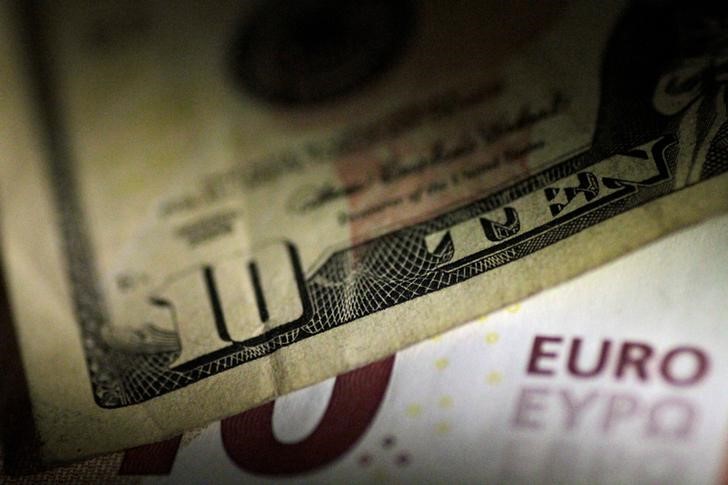
At 05:20 ET (09:20 GMT), the Dollar Index, which tracks the greenback against a basket of six other currencies, traded 0.1% lower at 105.640, falling back from the five-month peak of 106.51 seen earlier in the week.
The dollar has been in demand of late, as strong U.S. economic data and persistent inflation have prompted investors to drastically rethink the chances of the Federal Reserve cutting rates any time soon.
Elevated geopolitical tensions in the Middle East have also added to the dollar’s safe-haven appeal, resulting in the greenback climbing to its highest level since November.
However, the dollar’s dramatic gains have prompted sharp losses in other currencies, particularly in Asia.
This resulted in the U.S., Japan and South Korea announcing that they have agreed to “consult closely” on foreign exchange markets in their first trilateral finance dialogue on Wednesday – official speak for the potential for coordinated intervention.
“It may be too much to read into this a U.S. sign-off on Asian FX intervention, but this new coordination between Japan and Korea does raise the prospect that both could intervene at the same time,” said analysts at ING, in a note.
That said, the fundamentals still point to further dollar strength.
“Any large-scale FX intervention could temporarily slow the dollar’s advance, although a reversal is going to require quite a change in current conditions,” ING added.
In Europe, EUR/USD rose 0.1% to 1.0677, adding to Wednesday’s 0.5% gain, pulling away from a five-month low seen earlier in the month.
That said, these gains may be only temporary with the European Central Bank now expected to cut interest rates before the Federal Reserve in an attempt to give the region’s struggling economies a boost.
The ECB has made it “crystal clear” that interest rates could be cut in June, ECB Vice President Luis de Guindos said earlier Thursday, but it has also been firm that policy decisions beyond that remain up in the air.
Markets currently see 75 basis points of cuts in the central bank’s 4% deposit rate this year, or two full moves beyond June.
GBP/USD climbed 0.2% higher to 1.2475, trading just above five-month lows after Wednesday’s data U.K. inflation rose by its weakest rate in two and a half years in March.
Bank of England Governor Andrew Bailey said earlier this week that the U.K. faces less inflation risk than the U.S., and “this begs the question of why the market is pricing the same amount of easing this year – 45bp – for both the Fed and the BoE,” analysts at ING said.
“We can see those expectations shifting over the coming months as more BoE easing is priced. This will be negative for sterling.”
In Asia, USD/JPY traded largely flat at 154.38, after testing 34-year highs considerably above 154. Weakness in the yen also saw markets remain cautious over government intervention.
Japanese consumer inflation data, due on Friday, is expected to offer more cues on the likely path for the yen.
USD/CNY edged higher to 7.2389, also little moved after surging to five-month highs in recent weeks. Uncertainty over the Chinese economy kept traders biased against the yuan, as the People’s Bank moved to stem further losses in the currency.
To read the full article, Click Here
